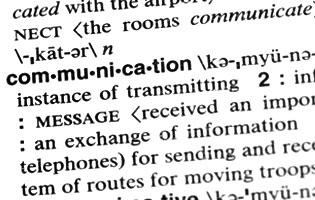


S
Sale-Leaseback:
An arrangement by which the owner occupant of a property agrees to sell all or part of the property to an investor and then lease it back and continue to occupy space as a tenant. Although the lease technically follows the sale, both will have been agreed to as part of the same transaction.
Second Mortgage:
A mortgage on property that ranks below a first mortgage in priority. Properties may have two, three, or more mortgages, deeds of trust, or land contracts as liens at the same time. Legal sequence priority, indicated by the date of recording, determines the designation first, second, third, etc.
Second Generation or Secondary Space:
Refers to previously occupied space that becomes available for lease, either directly from the landlord or as sublease space. See also "First Generation Space.
Security Deposit:
A deposit of money by a tenant to a landlord to secure performance of a lease. This deposit can also take the form of a Letter of Credit or other financial instrument.
Seisen (Seizen):
Possession of real property under claim of freehold estate. This term originally referred to the completion of feudal investiture by which a tenant was admitted into the feud and performed the rights of homage and fealty. Presently it has come to mean possession under a legal right (usually a fee interest). As the old doctrine of corporeal investiture is no longer in force, the delivery of a deed gives seisin in law.
Setback:
The distance from a curb, property line or other reference point, within which building is prohibited.
Setback Ordinance:
Setback requirements are normally provided for by ordinances or building codes. Provisions of a zoning ordinance regulate the distance from the lot line to the point where improvements may be constructed.
Shell Space:
The interior condition of the tenant's usable square footage when it is without improvements or finishes. While existing improvements and finishes can be removed, thus returning space in an older building to its "shell" condition, the term most commonly refers to the condition of the usable square footage after completion of the building's "shell" construction but prior to the build out of the tenant's space. Shell construction typically denotes the floor, windows, walls and roof of an enclosed premises and may include some HVAC, electrical or plumbing improvements but not demising walls or interior space partitioning. In a new multi-tenant building, the common area improvements, such as lobbies, restrooms and exit corridors may also be included in the shell construction. With a newly constructed office building, there will often be a distinction between improvements above and below the ceiling grid. In a retail project, all or a portion of the floor slab is often installed along with the tenant improvements so as to better accommodate tenant specific under-floor plumbing requirements.
Site Analysis:
The study of a specific parcel of land which takes into account the surrounding area and is meant to determine its suitability for a specific use or purpose.
Site Development:
The installation of all necessary improvements, (i.e. installment of utilities, grading, etc.), made to a site before a building or project can be constructed upon such site.
Site Plan:
A detailed plan which depicts the location of improvements on a parcel of land which also contains all the information required by the zoning ordinance.
Slab:
The exposed wearing surface laid over the structural support beams of a building to form the floor(s) of the building or laid slab-on-grade in the case of a non-structural, ground level concrete slab.
Soft Cost:
That portion of an equity investment other than the actual cost of the improvements themselves (i.e. architectural and engineering fees, commissions, etc.) and which may be tax-deductible in the first year. See also “Hard Cost”.
Space Plan:
A graphic representation of a tenant’s space requirements, showing wall and door locations, room sizes, and sometimes includes furniture layouts. A preliminary space plan will be prepared for a prospective tenant at any number of different properties and this serves as a “test-fit” to help the tenant determine which property will best meet its requirements. When the tenant has selected a building of choice, a final space plan is prepared which speaks to all of the landlord and tenant objectives and then approved by both parties. It must be sufficiently detailed to allow an accurate estimate of the construction costs. This final space plan will often become an exhibit to any lease negotiated between the parties.
Special Assessment:
Any special charge levied against real property for public improvements (e.g., sidewalks, streets, water and sewer, etc.) that benefit the assessed property.
Specific Performance:
A requirement compelling one of the parties to perform or carry out the provisions of a contract into which he has entered.
Speculative Space:
Any tenant space that has not been leased before the start of construction on a new building. See also "First Generation Space".
Step-Up Lease (Graded Lease):
A lease specifying set increases in rent at set intervals during the term of the lease.
Straight Lease (Flat Lease):
A lease specifying the same, a fixed amount, of rent that is to be paid periodically during the entire term of the lease. This is typically paid out in monthly installments.
Strip Center:
Any shopping area, generally with common parking, comprised of a row of stores but smaller than the neighborhood center anchored by a grocery store.
Subcontractor:
A contractor working under and being paid by the general contractor. Often a specialist in nature, such as an electrical contractor, cement contractor, etc.
Subdivision Plat:
A detailed drawing which depicts the manner in which a parcel of land has been divided into two or more lots. It contains engineering considerations and other information required by the local authority.
Subordination Agreement:
As used in a lease, the tenant generally accepts the leased premises subject to any recorded mortgage or deed of trust lien and all existing recorded restrictions, and the landlord is often given the power to subordinate the tenant's interest to any first mortgage or deed of trust lien subsequently placed upon the leased premises.
Surety:
One who at the request of another, and for the purpose of securing to him a benefit, voluntarily binds himself to be obligated for the debt or obligation of another. Although the term includes guarantor and the terms are commonly, though mistakenly, used interchangeably, surety differs from guarantor in a variety of respects.
Surface Rights:
A right or easement granted with mineral rights, enabling the possessor of the mineral rights to drill or mine through the surface.
Survey:
The process by which a parcel of land is measured and its boundaries and contents ascertained.
A
B
C
D
E
F
G
H
I
J
K
L
M
N
O
P
Q
R
S
T
U
V
W
X
Y
Z
View All
GLOSSARY
